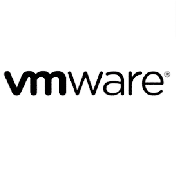Seminarinhalt
Die Teilnehmer*innen lernen :
- Schritte und Best Practices für die Planung, Datenerfassung und Dimensionierung eines verteilten Einsatzes.
- Themen und Techniken zur Fehlerbehebung bei einer verteilten Standard-Splunk-Installation unter Verwendung der in Splunk Enterprise verfügbaren Tools.
- Erfahrungen bei der Fehlersuche vor der Teilnahme an fortgeschritteneren Kursen. Sie werden eine verteilte Splunk Enterprise-Umgebung mit Hilfe des Live-Systems debuggen. Fallprotokolle.
- Grundlegende Kenntnisse über die Bereitstellung und Verwaltung von Splunk Enterprise in einer Cluster-Umgebung. Es deckt die Installation, Konfiguration, Verwaltung und Überwachung von Splunk Clustern ab.
Während Splunk-Cluster in Windows-Umgebungen unterstützt werden, werden in der Laborumgebung des Kurses nur Linux-Instanzen eingesetzt.
NUR für Kunden mit Splunk on-prem.
Programm
Module 1 – Introduction
- Overview of the Splunk deployment planning process and associated tools
Module 2 – Project Requirements
- Identify critical information about environment, volume, users, and requirements
- Review checklists and resources to aid in collecting requirements
Module 3 – Infrastructure Planning: Index Design
- Design and size indexes
- Estimate storage requirements
- Identify relevant apps
Module 4 – Infrastructure Planning: Resource Planning
- List sizing factors for servers
- Describe how reference hardware is used to scale deployments
- Identify the impact of clustering for index replication and for search heads
Module 5 - Clustering Overview
- Describe the different clustering capabilities
- Introduce the concepts of indexer and search head clustering
Module 6 - Forwarder and Deployment Best Practices
- Review types of forwarders
- Describe how to manage forwarder installation
- Review configuration management for all Splunk components, using Splunk deployment tools
- Provide best practices for a Splunk deployment
Module 7 - Integration
- Describe integration methods
- Identify common integration points
Module 8 – Performance Monitoring and Tuning
- Use the Monitoring Console to track test environment performance
- List options to fine tune performance for production environment
Module 9 – Use Cases
- Provide example architecture topologies
- Discuss different architecture options based on use case
Troubleshooting Splunk Enterprise :
Module 1 – Splunk Troubleshooting Methods and Tools
- Describe the Splunk Troubleshooting Approach
- List Splunk Diagnostic Resources and Tools
- Create and Splunk a Diag
- Use RapidDiag
Module 2 – Indexing Problems
- Discover Splunk deployment Topology and its Server Roles
- Identify Where to Check the Index-Time Pipeline Status
- Use the metrics.log to Clarify the Index-Time Problem
Module 3 – Input Configuration Problems
- Data Input issues
- Troubleshooting Inputs with the Monitoring Console
Module 4 – Input Deployment Problems
- Deployment server issues
- Forwarding and Receiving Issues
Module 5 – Indexer Cluster Management Administration
- Peer Offline and Decommission
- Master App Bundles
- Indexer Cluster Storage Utilization Options
- Site Mapping
- Monitoring Console for Indexer Cluster Environment
Module 6 – License, Upgrade, and User Management Problems
- Installation Issues
- Upgrade Considerations
- Splunk Licensing Issues
- Splunk Roles and User Management issues
Module 7 – Search Management Problems
- Troubleshoot Distributed Search Issues
- Identify Job Scheduling Problems
- Learn to Diagnose Crashing Problems
- Describe How to Prioritize Resources for Critical Splunk Processes
Module 8 – KV Store Collection and Lookup Management
- Identify the Types of Search Problems
- Isolate and Troubleshoot Search Problems
Splunk Enterprise Cluster Administration:
Module 1 – Large-scale Splunk Deployment Overview
- Factors that affecting deployment design
- How Splunk Enterprise can scale
- Splunk License Master
Module 2 – Single-site Indexer Cluster
- How Splunk Single-Site Indexer Clusters Work
- Indexer Cluster Components and Terms
- Splunk Single-Site Indexer Cluster Configuration
- Splunk indexer Cluster Log Channels
Module 3 – Multisite Indexer Cluster
- How Splunk Multi-site Indexer Clusters Work
- Multi-Site Indexer Cluster Terms
- Multi-Site Indexer Cluster Configurations
- Optional Multi-Site Indexer Cluster Configurations
Module 4 – Indexer Cluster Management and Administration
- Peer offline and decommission
- Master app bundles
- Indexer Cluster Storage Utilization Options
- Site Mapping
- Monitoring Console for Indexer Cluster Environment
- Indexer discovery
- Optional Indexer Discovery Configurations
- Volume-Based Forwarder Load Balancing
Module 6 – Search Head Cluster
- Indexer discovery
- Optional Indexer Discovery Configurations
- Volume-Based Forwarder Load Balancing
- Splunk Search Head Cluster Overview
- Search Head Cluster Configuration
Module 7 – Search Head Cluster Management and Administration
- Search Head Cluster Deployer
- Captaincy Transfer
- Search Head Member Addition and Decommissioning
- Monitoring Console for Search Head Cluster
Module 8 – KV Store Collection and Lookup Management
- KV Store Collection in Splunk Clusters
- KV Store Monitoring with Monitoring Console
Module 9 – SmartStore Implementation
- SmartStore Architecture Overview
- Deploy and manage SmartStore
Zielgruppen
Vorkenntnisse
- Splunk Power User Fast Start
- Splunk Enterprise Administration Fast Start




